ZGF Architects’ groundbreaking project in the Pacific Northwest
Portland International Airport (PDX) has officially opened its expanded solid wood main terminal to travelers. Designed by FZS The $2 billion renovation is a significant milestone for the Port of Portland and marks the largest Solid wood project of its kind worldwide. This expansion doubles the AirportThe airport will be able to handle up to 35 million passengers annually by 2045.
The design of the new terminal reflects the natural beauty of the Pacific Northwest. The terminal’s 9-acre solid wood roof creates the feeling of walking through a forest and offers expansive views of the airfield and surrounding countryside. The interiors are flooded with natural light and greenery, creating an environment that reflects the region’s unique character.Everyone loves Portland International Airport,’ says Gene Sandoval, partner at ZGF. ‘Our challenge was to double the capacity while creating an experience that passengers and staff will love as much as the original.’
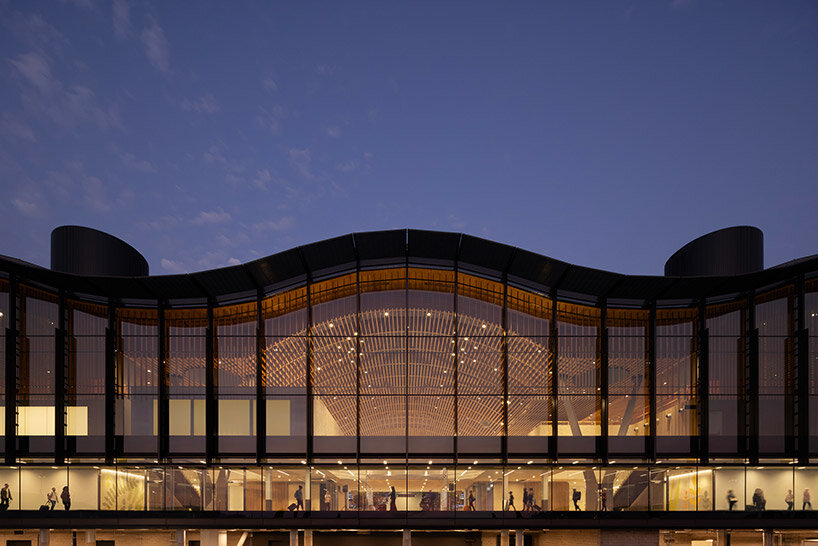
Image © Ema Peter Photography
Three and a half hectares of roof cover the largest solid wood building at Portland Airport
The expansion of Portland’s PDX airport main terminal is the largest mass timber project ever undertaken. The 3.5 million board feet of timber used for the roof, concessions, flooring and walls are sourced within 300 miles of the airport. The timber comes from small family forests, non-profit organizations and tribal nations. This sustainable approach to Architects at ZGF supports both the local economy and highlights Oregon’s tradition of forest product innovation. The mass timber roof, a marvel of engineering, symbolizes both the history and future of sustainable timber structures.
The decision to use mass timber for the terminal’s 9-acre roof was based on considerations of cost, feasibility and a desire to honor the Pacific Northwest’s timber industry. The roof, which includes 49 skylights of varying shapes and sizes, filters natural light into 60 percent of the terminal. The structure, made of mass plywood panels, glulam beams and wood lattices, showcases traditional weaving techniques native to the region. This complex design not only highlights the craftsmanship used, but also contributes to the terminal’s sustainability by reducing the need for steel and other materials.
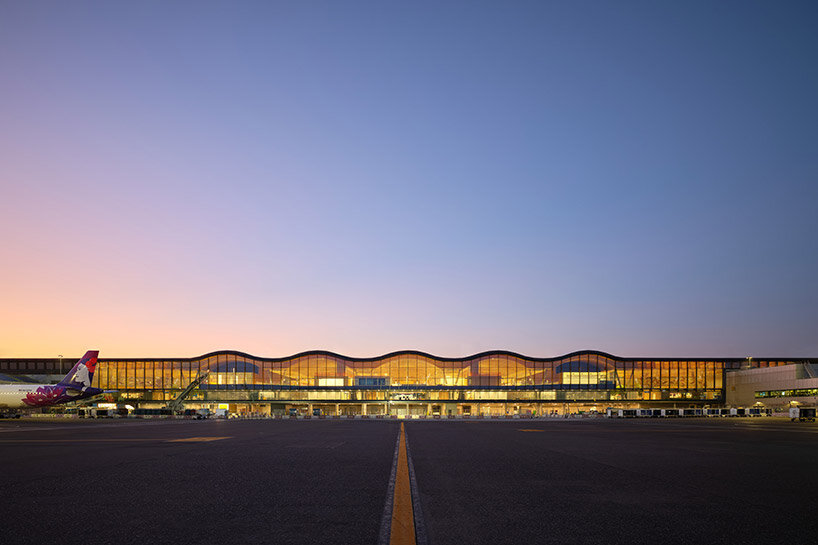
Image © Dror Baldinger
zgf mimics the city’s pedestrian-friendly neighborhoods
ZGF designed its wooden airport extension with urban design principles in mind, taking inspiration from Portland’s pedestrian-friendly neighborhoods. The layout features smaller-scale architecture within the expansive space, so travelers experience a clear and intuitive flow from the redesigned ticket hall to security checkpoints and on to their gates before entering the terminal. Designed as a public space, the marketplace before security checkpoint features stadium seating and offers local goods and food. After security checkpoints, the terminal continues to emphasize comfort and accessibility, with tree-lined pathways, café seating and street furniture that invite travelers to linger.
The team focused the design on the passenger experience and sought to reduce the stress often associated with air travel by creating a tranquil environment filled with natural elements. Working with Terrapin Bright Green and PLACE Landscape Architects, they ensured biophilia – the connection between people and nature – was integrated throughout the terminal. The result is a place where passengers can relax and enjoy the journey on tree-lined pathways, cascading gardens and over 5,000 strategically placed plants.
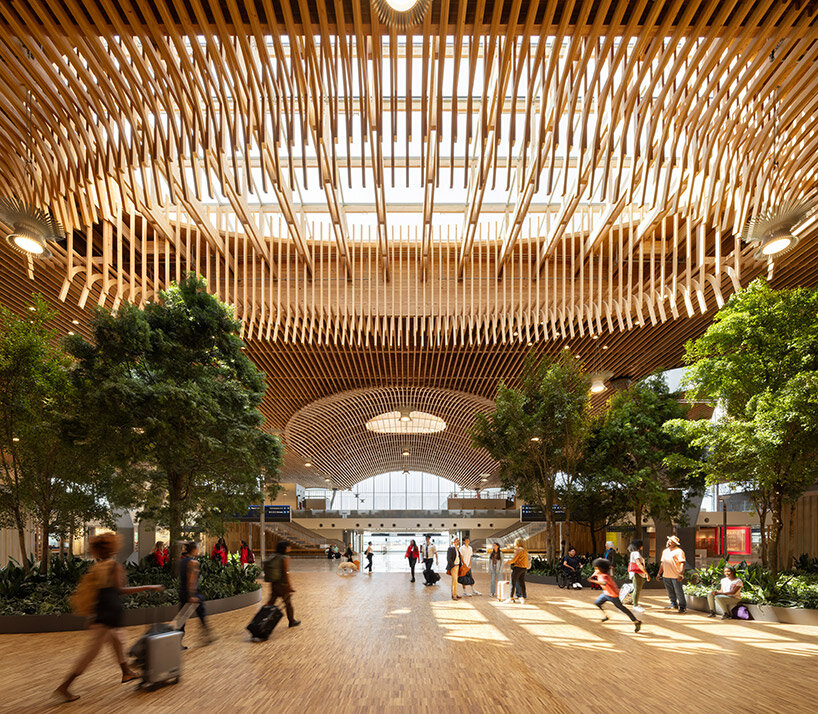
Image © Ema Peter Photography
Supporting the local economy and forestry
Sustainability was a key focus in the design of the terminal. By reusing much of the existing infrastructure and optimizing the use of wood, steel and concrete, a seventy percent reduction in sequestered carbon was achieved compared to building a new terminal. The terminal’s highly efficient building envelope and all-electric ground source heat pump system contribute to a fifty percent reduction in energy consumption per square meter. The roof is designed to withstand a magnitude 9.0 earthquake and is supported by Y-shaped columns with seismic isolation bearings that allow for lateral movement during earthquakes.
The timber procurement strategy for the terminal was designed to support the local economy and promote sustainable forestry practices. Almost all of the timber for the glulam beams and lattices came from environmentally sustainable forests. Through direct procurement methods, over one million board feet of the timber can be traced back to its forest of origin, allowing the project to tell the story of the timber’s environmental impact and community benefits.
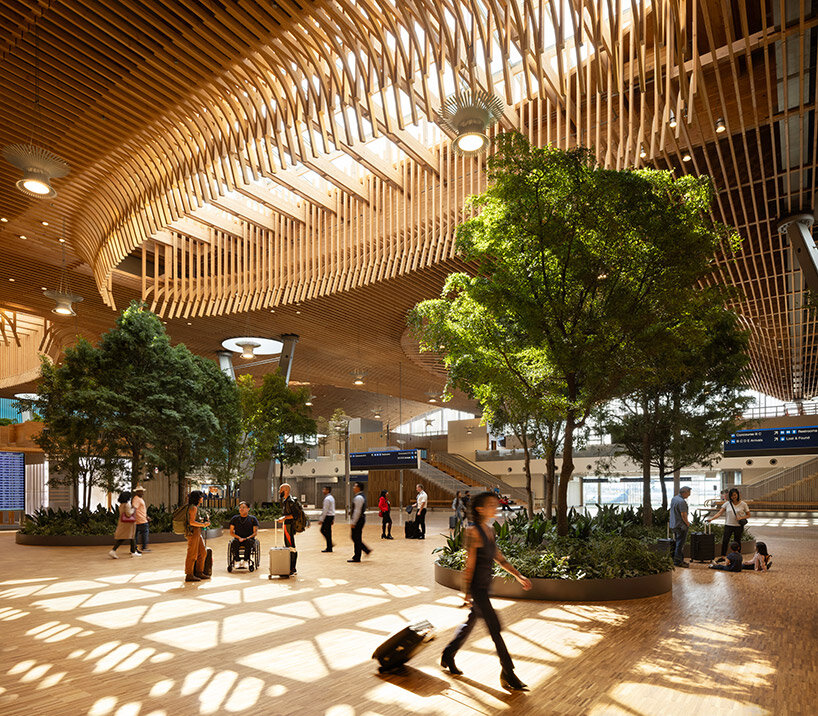
Image © Ema Peter Photography
Rather than building an entirely new terminal, the Port of Portland and ZGF opted for a phased renovation and expansion. This approach allowed the airport to remain fully operational during the five-year construction period. The prefabricated wood roof that spans the expanded lobby, check-in and security areas played a critical role in minimizing disruption. This strategy not only saved time and money, but also reduced the project’s carbon footprint.
The expansion of Portland International Airport’s main terminal is not only a response to current air travel demands, but also a forward-looking project that sets a new standard for airport design. A second phase of the project is already underway and is scheduled for completion in early 2026. The terminal will continue to evolve and offer additional retail and dining options that will further enhance the traveler experience.
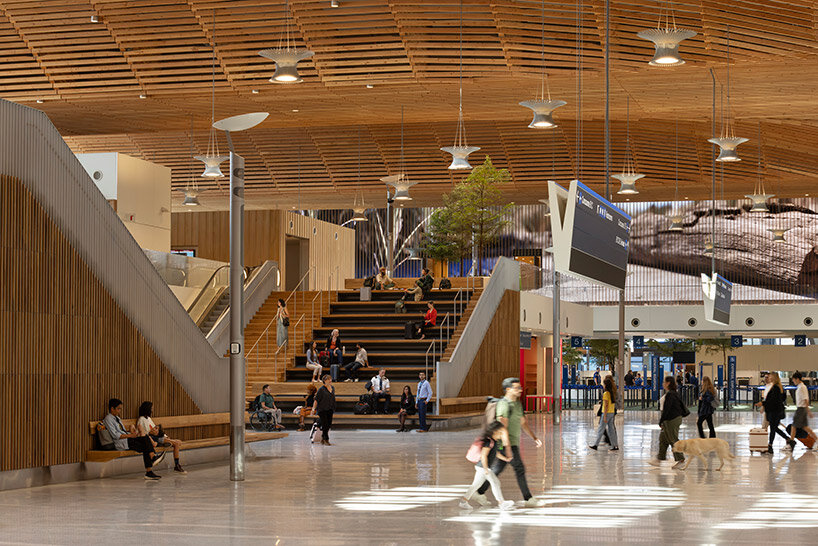
Image © Ema Peter Photography

